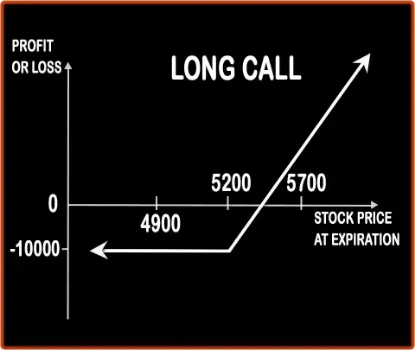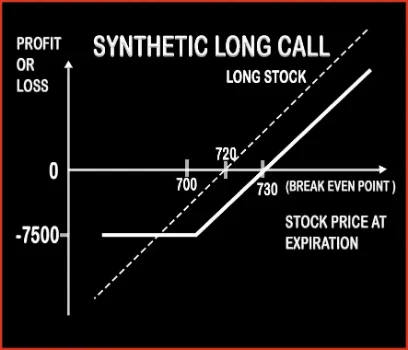Compare Strategies
| LONG CALL | SYNTHETIC LONG CALL | |
|---|---|---|

|

|
|
| About Strategy |
Long Call Option StrategyThis is one of the basic strategies as it involves entering into one position i.e. buying the Call Option only. Any investor who buys the Call Option will be bullish in nature and would be expecting the market to give decent returns in the near future. Risk:
|
Synthetic Long Call Option StrategyA trader is bullish in nature for short term, but also fearful about the downside risk associated with it. Here, a trader wants to hold an underlying asset either in physical form like in case of commodities or demat (electronic) form in case of stocks. But he is always exposed to downside risk and in order to mitigate his losses, .. |
LONG CALL Vs SYNTHETIC LONG CALL - Details
| LONG CALL | SYNTHETIC LONG CALL | |
|---|---|---|
| Market View | Bullish | Bullish |
| Type (CE/PE) | CE (Call Option) | CE (Call Option) |
| Number Of Positions | 1 | 2 |
| Strategy Level | Beginner Level | Beginners |
| Reward Profile | Unlimited | When Price of Underlying > Purchase Price of Underlying + Premium Paid |
| Risk Profile | Limited | Limited (Maximum loss happens when the price of instrument move above from the strike price of put) |
| Breakeven Point | Strike Price + Premium | Underlying Price + Put Premium |
LONG CALL Vs SYNTHETIC LONG CALL - When & How to use ?
| LONG CALL | SYNTHETIC LONG CALL | |
|---|---|---|
| Market View | Bullish (Any investor who buys the Call Option will be bullish in nature and would be expecting the market to give decent returns in the near future.) | Bullish |
| When to use? | This strategy work when an investor expect the underlying instrument move in upward direction. | A trader is bullish in nature for short term, but also fearful about the downside risk associated with it. |
| Action | Buying Call option | Buy 1 ATM Put or OTM Put |
| Breakeven Point | Strike price + Premium | Underlying Price + Put Premium |
LONG CALL Vs SYNTHETIC LONG CALL - Risk & Reward
| LONG CALL | SYNTHETIC LONG CALL | |
|---|---|---|
| Maximum Profit Scenario | Underlying Asset close above from the strike price on expiry. | Current Price - Purchase Price - Premium Paid |
| Maximum Loss Scenario | Premium Paid | Premium Paid |
| Risk | Limited | Limited |
| Reward | Unlimited | Unlimited |
LONG CALL Vs SYNTHETIC LONG CALL - Strategy Pros & Cons
| LONG CALL | SYNTHETIC LONG CALL | |
|---|---|---|
| Similar Strategies | Protective Put | Protective Put, Long Call |
| Disadvantage | • In this strategy, there is not protection against the underlying stock falling in value. • 100% loss if the strike price, expiration dates or underlying stocks are badly chosen. | •Chances of loss if the underlying goes down. •Incur losses if option is exercised. |
| Advantages | • Less investment, more profit. • Unlimited profit with limited risk. • High leverage than simply owning the stock. | •Limited risk, unlimited profit. •Protection to your long-term holdings. • Limited loss to the to the premium paid for Put option. |